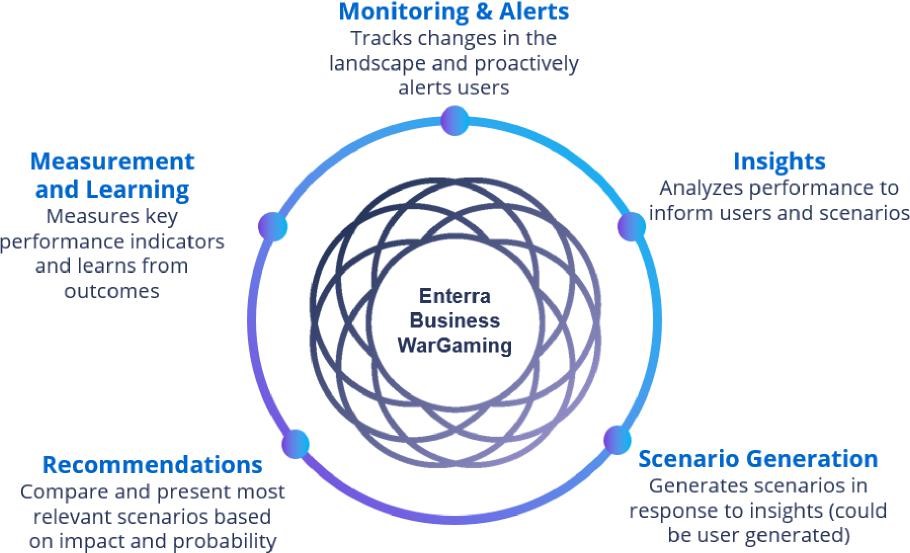When most people think about a business, they don’t often picture the myriad decisions that must be made on a daily basis. However, as Bain analysts, Michael C. Mankins and Lori Sherer, explain, “The best way to understand any company’s operations is to view them as a series of decisions.”[1] Neither do people often think about a business’ supply chain. But supply chain expert Lora Cecere insists, “The supply chain IS Business, not a department within a business.”[2] The logical conclusion from those two statements is that making better supply chain decisions will improve any company’s performance. Mankins and Sherer report, “We know from extensive research that decisions matter — a lot. Companies that make better decisions, make them faster and execute them more effectively than rivals nearly always turn in better financial performance. Not surprisingly, companies that employ advanced analytics to improve decision-making and execution have the results to show for it.”
Apparently, many executives have yet to absorb the truisms expressed by Mankins, Sherer, and Cecere. Technology writer Joe McKendrick reports that a survey conducted by LeanDNA, in collaboration with Wakefield Research, found, “More than three-fourths of supply chain executives are not prepared to observe and predict changes that may disrupt the flow of their business. Part of the problem is that much of it is not automated.”[3] Changes in the business environment (or risks) can come from any direction, at any time, and from any place. And, as supply chain professionals know, changes and disruptions don’t occur as neat, isolated events. They often unfold at the same time and must be dealt with simultaneously. Science fiction author Kurt Vonnegut once wrote, “History is merely a list of surprises. It can only prepare us to be surprised yet again.” That’s why automated decision-making is becoming more important for all large companies.
Embracing Uncertainty
While many people would like things to stay as they are (or return to the good old days), humans have always understood that change is both constant and inevitable. The first philosopher who recorded that observation was the Greek philosopher Heraclitus. According to freelance writer and philosopher Joshua J. Mark, “[Heraclitus’] central claim is summed up in the phrase Panta Rhei (‘life is flux’) recognizing the essential, underlying essence of life as change. Nothing in life is permanent, nor can it be, because the very nature of existence is change.”[4] Denying that change is happening or, even worse, ignoring it, helps no one. Nevertheless, embracing uncertainty can be difficult. According to Kelly Schmutte, a Designer and Lecturer at the Stanford Hasso Plattner Institute of Design, and Andrea Small, Design Strategy Lead and Senior Manager at Samsung Research America, “Evolutionarily, the brain dislikes uncertainty, regarding it as a type of pain. The brain therefore tries to avoid uncertainty, and in its place creates story upon story to explain it away. The brain is so powerful it causes people to vividly imagine a way to closure.”[5] As you might imagine, this human trait makes embracing uncertainty more difficult.
Artificial intelligence (AI) can help overcome this trait since it doesn’t see uncertainty as a type of pain. AI can also simultaneously consider may more variables than the human brain. One way to embrace uncertainty is with scenario planning. Supply chain journalist Robert J. Bowman reports that Accenture analysts believe such planning should go to the extremes. He explains, “The best way that industrial supply chains can prepare for an uncertain future is to imagine the most extreme outcomes playing out — in opposite directions. That, at least, is the premise behind extreme scenario planning, a concept devised by Accenture. Developed in conjunction with Oxford Economics, the model lays out scenarios in five subject areas: climate concessions, global trade flows, access to resources, technology adoption, and the industrial workforce.”[6]
Scenario planning can provide benefits beyond risk management. For example, the Enterra Business WarGaming™ solution enables organizations to leverage their data to make strategic decisions by anticipating the moves of their competitors and taking direct action to beat the competition, mitigate risk, navigate uncertainty, and maximize market opportunity. Part of Enterra Business WarGaming is the Enterra Global Insights and Decision Superiority System™ (EGIDS™) — powered by the Enterra Autonomous Decision Science® platform — which can help business leaders rapidly explore a multitude of options and scenarios.

The late Nobel prize–winning economist Thomas Schelling explained, “Games have one quality that separates them qualitatively from straightforward analysis and permits them to generate insights that could not be acquired through analysis, reflection, and discussion. That quality can be illustrated by the impossibility theorem: one thing a person cannot do, no matter how rigorous his analysis or heroic his imagination, is to draw up a list of the things that would never occur to him.”[7] AI can help broaden the corporate imagination. Matthias Wahrendorff, industrial research lead at Accenture, adds, “If you’re prepared for extremes, then you’re prepared for anything in between.”[8]
Concluding Thoughts
In a rapidly changing business environment, moving at computer speed is essential for success. AI and autonomous decision science (ADS®) can help. Joel Beal, CEO and cofounder of Alloy.ai, explains, “The good news for consumer brands operating in the current, challenging supply chain environment is that the data available — and the technologies for working with that data — have become so advanced that they can help mitigate many of the business problems that stem from volatility.”[9] Instead of worrying about things out your company’s control, Beal suggests, “Focus on things that you can control, and the time frames in which you can control them. Most brands will set annual plans and then execute against those; but, forecasting that far ahead in an unpredictable world is difficult. There are just too many variables at play. Instead, focus on the short and medium term where you have the most control, and the best data for making smart decisions if you choose to utilize it.” That doesn’t mean you should ignore long-term thinking. Scenario planning can help companies forge sensible strategies for dealing with future uncertainties.
AI can also help companies embrace short-, medium-, and long-term uncertainties and make faster, better decisions by automating many of them. Like Mankins and Sherer, Beal notes, “Companies make thousands of decisions a day about what to produce, where to put product and what to promote. But they often make those decisions based on very limited information. … However, it is now possible for brands to get a real-time pulse on exactly what is happening with their demand and supply chains. … Time is money, and technology is now available to help you make informed decisions fast.”
Footnotes
[1] Michael C. Mankins and Lori Sherer, “Creating value through advanced analytics,” Bain Brief, 11 February 2015.
[2] Lora Cecere, “Sage advice? Only for turkeys.” eft, 1 February 2013.
[3] Joe McKendrick, “Technology Still Doesn’t Supply The Insights Needed For Supply Chains,” Forbes, 18 March 2024.
[4] Joshua J. Mark, “Heraclitus of Ephesus,” World History Encyclopedia, 14 July 2010.
[5] Kelly Schmutte and Andrea Small, “To be more creative, embrace ambiguity,” Quartz, 17 May 2022.
[6] Robert J. Bowman, “Preparing for the Future With ‘Extreme Scenario Planning’,” SupplyChainBrain, 15 July 2024.
[7] Thomas Schelling, “The role of war games and exercises.” In A. Carter, J. Steinbruner, & Zraket, C. (Eds.), Managing nuclear operations, Washington, DC: The Brookings Institution, 1987, p. 436.
[8] Bowman, op. cit.
[9] Joel Beal, “How Consumer Brands Can Move Fast to Address Change, Become More Efficient,” SupplyChainBrain, 28 April 2023.





